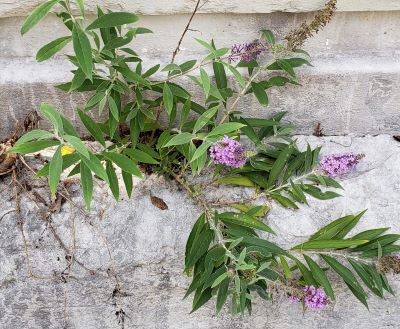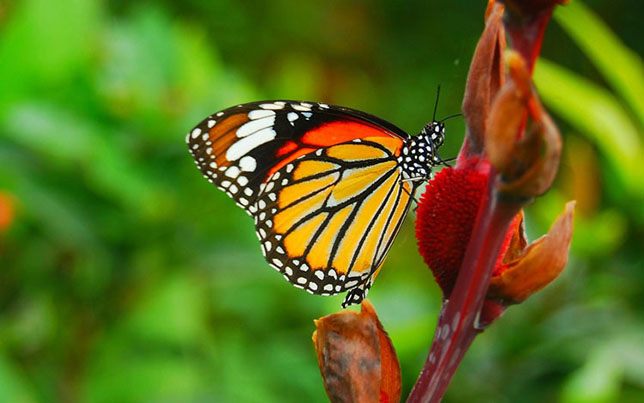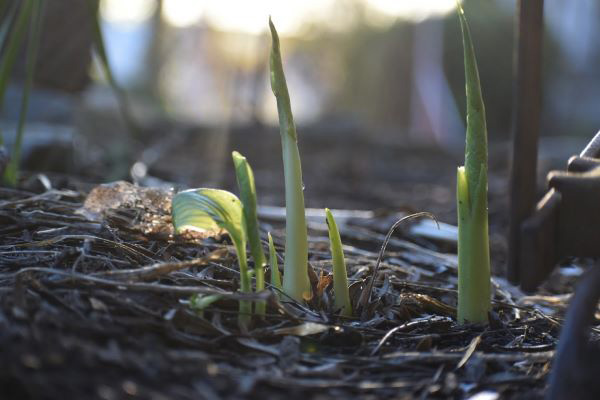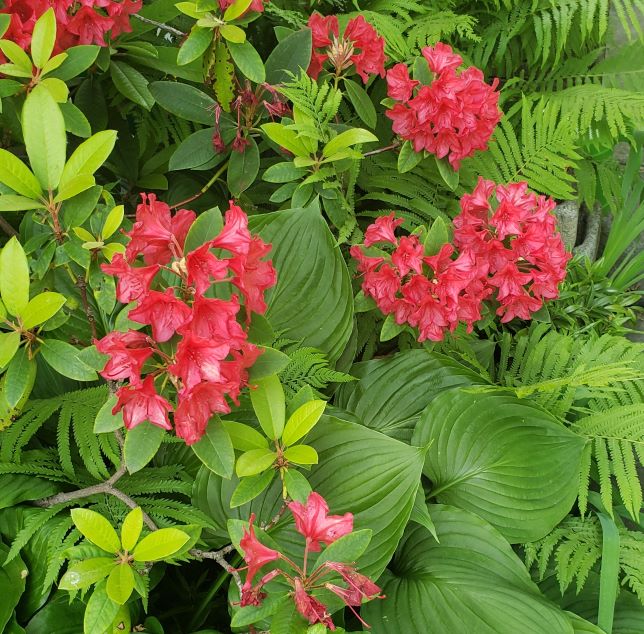Remember when gardening was like everything else--when you could just do something without making a choice to be "responsible"? We have a whole new world to which we're adjusting, and it's a good thing, but a lot more complicated. Fortunately, as humans we have the skills to navigate this new terrain, incorporating the knowledge so readily available at our fingertips whenever we desire. But whose information do we use, and how do we evaluate the validity? Yes, even in gardening there is truth, and then another truth. As such, this blog was inspired by my desire to plant a beautiful, long-blooming plant that would not add to the burden of invasive species, so I began my search. Was there an "eco-safe" butterfly bush? As it turns out, there's no simple answer to that question, for butterfly bushes or any other plant.

Plant Patents are Gold for Gardeners
In general, "eco-safe" varieties have an altered ability to reproduce. They have been tested for some number of years (usually by the breeder) to evaluate that ability, as well as the stability of the prominent ornamental features of the plant. This isn't done out of the goodness of anyone's heart in concern for environmental safety (entirely). Rather, it's all part of the patent process, which enables breeders to protect their invention, thus preserving profits for themselves for a prescribed time.
You can look up a cultivar's patent online. Google Patents and Justia Patents are two sites you can use to search--you can enter the botanical and cultivar name, or sometimes just the common name may bring it up. Note that many plants have an original (unfamiliar) patented name AND a subsequent trade name that is used once the plant goes to market, and you may not find the trade name on those sites. That makes it a little harder, but your best bet is googling the plant name with addition of the word "patent". For instance, for a certain winterberry holly, Ilex 'Little Goblin' is the trade name, but the actual patented name is 'NCIV1.'
So what might that patent information tell you? Depending on whether it is an annual, perennial, shrub, etc., a great deal:
Features that make this cultivar distinct from similar varieties, whether it be flower color, habit, tolerance of certain growing conditions, etc.
Basic features of the plant in great detail--size, shape, growth rate--better than any plant description you'll ever find, primarily since you're seeing ALL the information, not just the the traits the marketers want you to focus on
Leaf color and texture in all seasons
Flower fragrance, persistence, and blooming season
Disease resistance and cold hardiness
If the plant is male or female, requires a pollinator, and other reproductive traits. That information is rarely provide by garden centers or found on plant tags.
Description of the root system, which can be quite valuable to know and which you'll never be told
Where and how long the plant was grown to establish these qualities, and under what conditions (field, greenhouse, etc.)
The plant's lineage--just like for a pedigreed dog. This will tell you whether the plant is a natural cross or hybrid selection or genetically modified. (A natural cross can be induced by a human moving the pollen--that is NOT a genetically modified plant).
So as you can see, an enormous amount can be gleaned from patent info! For "eco-safe" cultivars, you'll mostly be concerned about the reproductive traits, for which there is often a section called just that. If not, you want to look under the flower description at "reproductive organs" and "seeds and fruit," and note the amount of pollen and seed produced. Yes, there will be some botanical language to slog through, but we can simplify that.
Plant Reproduction Basics and Sterility
As mentioned, "eco-safe" generally means that the plant's reproduction is hampered in some way, resulting in reduced fertility. So how is this accomplished? A little basic botany is required here.
In typical garden flowers, the pollen from the stamen is transferred to the stigma, thus initiating reproduction if fertilization occurs. Therefore, in plants with altered fertility, male parts (anthers/stamens--produce pollen) or female parts (pistil, stigma, style, & ovary--produce seed) are essentially dysfunctional in some fashion. This can be one or the other, or both. You may see these conditions referred to as male sterile, female sterile, or completely/fully sterile, respectively.
A common acceptable condition that allows a cultivar of a regulated invasive plant to be sold is that the plant produce less than 2% viable seed. This is the case in Oregon, where Buddleia davidii is classed as invasive, but cultivars with such reduced fertility are permitted for sale. Interestingly, some of these are not allowed to be sold as "butterfly bush," but must be labelled "summer lilac" or "nectar bush," I assume to reduce confusion for consumers. Or, possibly to increase sales to those who don't want to plant something they know is invasive? Sorry, I wasn't at that meeting, but I imagine some horticultural industry lobbyists and conservationists were.

Why does it matter?
Ok, so here's the important part that you don't see on your "nectar bush" label. If the plant fertility is reduced, then what's the problem? That depends on your point of view, so I'll leave the decision up to you, with these considerations:
- Butterfly bushes are copious producers of seed. It is estimated that ONE butterfly bush can produce up to 3 MILLION seeds in a season, and 2% of that is 60,000. That's still a LOT of seed. Its long-distance dispersal by wind is highly efficient, and it germinates and grows easily in poor, minimal soil and disturbed areas--like cracks in sidewalks, construction areas, and vacant lots.
- Cultivars that are only female sterile still produce viable pollen that can fertilize wild populations, and male sterile plants can potentially be fertilized by pollen from wild populations. In time, especially with plants like Buddleia that rely heavily on cross-pollination, that can lead to passing on traits of the cultivars that may further increase the survivability of the plants in the wild.
- It is also possible that due to gene transfer in this way, over time fertility could be restored to these "safe" varieties. Since "safe" varieties were developed and selected in relatively few years and did not exist before, no one knows how quickly this could occur. This has already been documented in other supposedly sterile cultivars of other species, such as Hibiscus syriacus (Rose of Sharon, Althea). Particularly in those that favor cross-pollination, one wonders whether lack of adequate exposure to other varieties during the development and testing period may simply mask the actual reproductive abilities of the plant.
- Even one of the breeders of such plants does not completely discount the chance of seed production: this "does not preclude the possibility that seed set may be observed on rare occasions.”
Armed with this knowledge, you can make your choice. Below are some cultivars stated as having reduced or absent fertility. We would certainly recommend these over other Buddleia cultivars that lack this feature. And of course, timely deadheading will remove seeds before they are able to form. Note that there is only one native butterfly that uses Buddleia davidii as a food source for caterpillars, so we should still look to include native plants such as itea, clethra, aronia, fothergilla, and others. Now you know how to look them up if they're patented, get the real skinny, and decide for yourself!

























